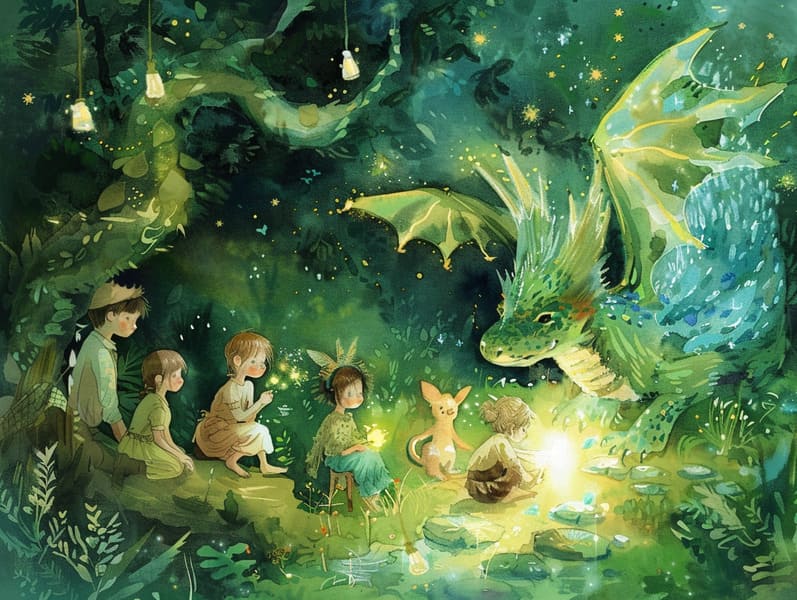The Evolution of Fairy Tales for Kids and Their Unwavering Captivation.
The Evolution of Fairy Tales for Kids and Their Unwavering Captivation.
Blog Article

Vintage fairy tales have historical significance. These narratives have been narrated from one generation to the next centuries before they were ever inscribed. They were born from a variety of civilizations, including Middle Eastern traditions. They were initially conveyed among older generations, often carrying themes and messages reflective of the societal norms and beliefs of the time.
Jacob and Wilhelm Grimm, Jacob and Wilhelm Grimm, were among the first to assemble many of these beloved stories. Their volume, "Grimm's Story Collection," included classics like "Cinderella," "Hansel and Grethel," and "Snow White," which have since become classics in the world of timeless fairy tales. Similarly, Hans Andersen's delightful stories, such as "The Story of the Little Mermaid," and "The Duckling that Could," have gained the love worldwide, guaranteeing their place in the pantheon of famous fairy tales.
Despite their age, these stories remain as important as ever, especially as bedtime stories for kids. These whimsical stories are now available in different formats, including richly illustrated books, enchanting animations, and digital storybooks.
Their persistent charm can be linked to several captivating elements:
Moral Lessons: Traditional fairy tales often whisper important moral lessons. Tales like "The Wolf and the Liar" teach the benefit of truthfulness, while "The Tale of the Tortoise and the Hare" show the benefits of determination and meekness. These narratives offer little ones clear distinctions between truth and falsehood, building their moral compass in a mild yet significant way.
Compassion and Knowledge: Classic fairy tales frequently involve characters facing challenges and struggles, stimulating kids to comprehend with their struggles and back their triumphs. For instance, "The Story of Beauty and the Beast" shows us the merit of looking beyond appearances to perceive the inner self of a soul, advancing warmth and discernment.
Cultural Insights: Many traditional fairy tales are infused with the cultural contexts from which they arose. Reading these stories can provide intriguing perspectives into different historical contexts, building a sense of world awareness and knowledge.
Fantasy and Imagination: The extraordinary elements in traditional fairy tales—wizardry and magic—stimulate children’s creative minds. These tales transport readers to mythical realms, triggering inventive ideas and a sense of fascination that endures a lifetime.
Traditional fairy tales are not only fascinating but also teaching. They serve as bewitching tools in nurturing various intellectual and emotional capacities in little ones. When traditional fairy tales are voiced, they develop verbal development by showing new language and complex sentence structures. This practice also develops listening abilities and attention, as the young listen intently, anxious to see what happens next.
Furthermore, analyzing the themes and characters of timeless fairy tales can develop thought processes and reasoning skills. Young readers are instructed to discover patterns, expect results, and figure out cause and effect. These conversations also help young readers utter their thoughts and feelings, contributing to their emotional intelligence.
In today’s high-tech era, the availability of online fairy tales has made these stories more reachable than ever. Online platforms and software share wide arrays of Grimm's fairy tales that can be browsed or listened on anytime, anywhere. Fairy tales told out loud are particularly common, making available an charming way for young readers to experience these captivating stories. Audio stories and voiced videos take characters and settings to life, often accompanied by enchanting sound effects and musical scores that intensify the tale-telling adventure.
The lasting appeal of old fairy tales lies in their ability to evolve to here present eras while sustaining their basic principles. Contemporary reimaginings of these stories often present more varied protagonists and modern settings, making them relevant to today’s audience. However, the underlying themes of braveness, goodness, and justice remain unchanged, continuing to resonate with audiences of all ages.
Fairy tales also offer a sense of assurance and knowability. They supply a well-arranged narrative with a obvious beginning, middle, and end, often closing with the resolution of conflicts and the triumph of virtue over vice. This constancy can be encouraging for children, making available a sense of reliability in an always shifting world.
Ancient fairy tales continue to mesmerize and coach new generations, maintaining their spell and value in modern society. As bedtime stories for kids, they afford a perfect blend of enchantment and education, facilitating moral values, empathy, and creativity. The presence of free fairy tales online and the likability of fairy tales narrated validate that these timeless tales remain within reach to new generations.
By sustaining and telling these stories, we continue to cherish the rich tapestry of tradition and cultural heritage. Whether you are delving into a gorgeously illustrated book, seeing a cyber library, or listening to an audio story, the majesty of classic fairy tales is always within reach. These stories teach us of the invariable nature of narratives and its ability to gather us across epochs and places.
Regardless if you are enjoying a beautifully illustrated book, perusing a cyber collection, or listening through an narrated book, the majesty of ancient fairy tales is always within reach.
These tales point out of the timeless presence of stories and its ability to unite us across generations and cultures, forging a link that charms and informs alike.